Zearalenone
Zearelanone is known as the estrogenic endocrine disrupting mycotoxin. It binds to what’s considered the “bad” estrogen receptor, which is correlated to associated risk factors for metabolic, cardiovascular, and neurological diseases, as well as osteoporosis and some estrogenic cancers.
Zearalanone is globally recognized to affect puberty in exposed children. This is not just a female issue, as Zearalenone impacts male testes and germ cells, impacting fertility in both genders.
Other effects that often get overlooked are Zearalenone’s negative effect on heart function, the liver, and the immune system. It can slow the heart rate and decrease the contractile strength of the heart muscle. It’s toxic to the liver and immune glands which house many of our immune factories.

Signs & Symptoms
- Hyperestrogenic syndromes
- Acne
- PMS, menstrual alterations
- Precocious puberty
- Osteoporosis
- Hypoandrogenism in men
- Central weight gain
- Infertility, both genders
- Fatigue
- Short of breath, with or without chest pain
- Slow heart rate or palpitations
- Heart block
- POTS
- Fainting
- Dizziness/vertigo
- Ear ringing
- Edema
- Sinusitis
- Frequent infections, pneumonia
- EBV reactivation
- Clostridium difficele infections
- Fungal nail infections
Supplement Cautions
This mycotoxin can be activated by Candida and Saccharomyces species. For this reason, Dr. Jill avoids using Saccharomyces as a binder with exposure to Zearalenone or its parent mold, Fusarium.
Download the Zearalenone Fact Sheet for Patients
 Loading...
Loading...
Zearalenone Instagram Live
Medical Practitioner Technical Sheet
The Zearalenone Tech Sheet for Practitioners is included in the Updates in Mold-Related Illness course materials


